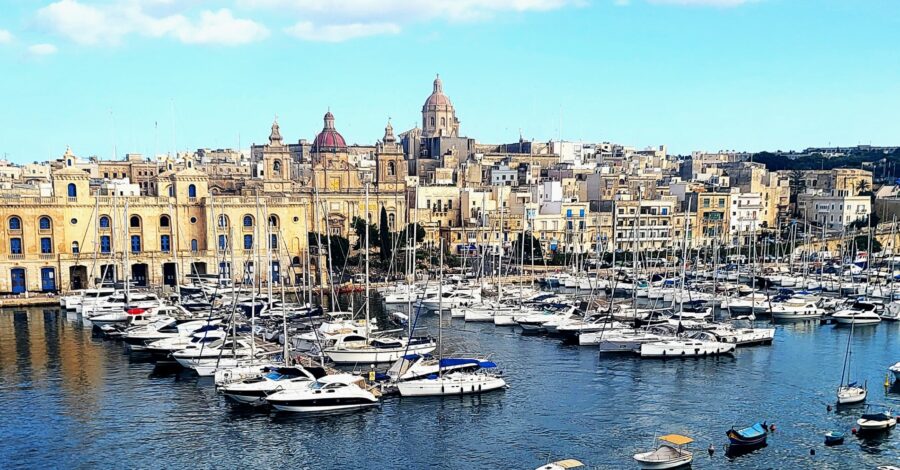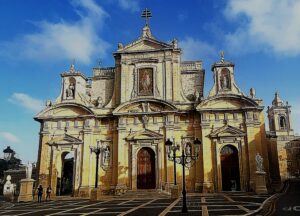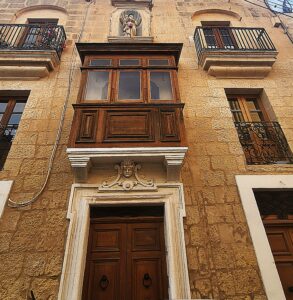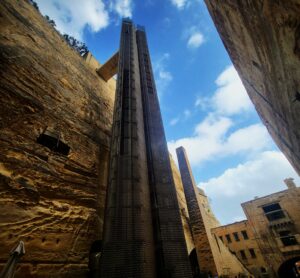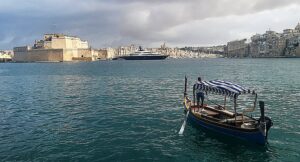Malta is an island nation located in the Mediterranean Sea, about 70 miles south of Sicily. The archipelago consists of five islands. The two largest and most populated are Malta and Gozo.
Malta is home to one of the oldest cultures on the planet. Throughout history, it has played a vital role in struggles for domination of the Mediterranean by European, Middle Eastern and North African powers. Maltese culture has absorbed and been molded by the influences of the Phoenicians, Romans, Greeks, Arabs, Normans, Sicilians, Spanish, French, and Moors. The Maltese language is derived from Sicilian Arabic and the dialects of Algeria and Tunisia. Thanks to more than 150 years as a British colony, all the Maltese we met on our visit spoke English.
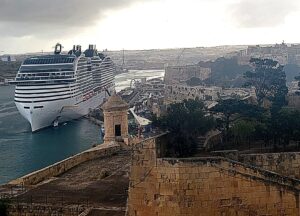 The apostle Paul landed on Malta around 60 AD and introduced Christianity to the islands. No surprise that several churches across the islands are named for Saint Paul. Many are lavish and worth a visit.
The apostle Paul landed on Malta around 60 AD and introduced Christianity to the islands. No surprise that several churches across the islands are named for Saint Paul. Many are lavish and worth a visit.
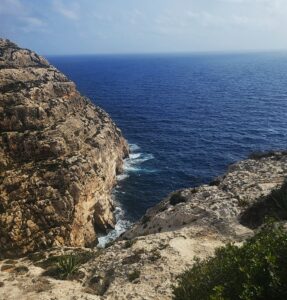
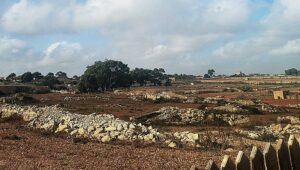 We traveled through Malta during the off-season. Any site can be quite crowded in season, when the cruise ships arrive. Even during our stay in November, two ships with thousands of visitors were in port, and the main tourist spots were jammed, especially Valletta.
We traveled through Malta during the off-season. Any site can be quite crowded in season, when the cruise ships arrive. Even during our stay in November, two ships with thousands of visitors were in port, and the main tourist spots were jammed, especially Valletta.
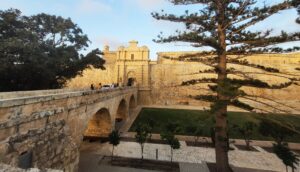 On any of the islands, you are never far from the dazzling turquoise and sapphire blue sea. A variety of landscapes are scattered across the islands: quiet, agricultural villages towards the center, striking Baroque architectural villages throughout Malta and Gozo,
On any of the islands, you are never far from the dazzling turquoise and sapphire blue sea. A variety of landscapes are scattered across the islands: quiet, agricultural villages towards the center, striking Baroque architectural villages throughout Malta and Gozo, 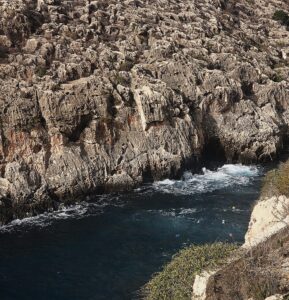 as well as dramatic coastlines with cliff top hikes that drop off into the sea. The cliffs, caves and coves along the coastline are unforgettably scenic. There are also a number of Megalithic temples scattered throughout Malta and Gozo- temples that predate Egypt’s pyramids.
as well as dramatic coastlines with cliff top hikes that drop off into the sea. The cliffs, caves and coves along the coastline are unforgettably scenic. There are also a number of Megalithic temples scattered throughout Malta and Gozo- temples that predate Egypt’s pyramids.
Malta and Gozo are ideal for architecture and history lovers but also for outdoor enthusiasts. Diving, snorkeling, swimming hiking, rock-climbing are superb here.
MALTA
Stone Temples
 For those fascinated by ancient historic sites: Hagar Qim and Mnajdra are both UNESCO listed Megalithic structures. If you are there during the summer solstice, the angle of the sun rays is mystical and aligns with the design of the standing stone boulders.
For those fascinated by ancient historic sites: Hagar Qim and Mnajdra are both UNESCO listed Megalithic structures. If you are there during the summer solstice, the angle of the sun rays is mystical and aligns with the design of the standing stone boulders.
Another fascinating temple is the Hypogeum, an amazing subterranean space which was built about 3,300 to 3,000 BC. The tour there must be booked in advance, as visiting hours and the number of visitors allowed in are limited. It is difficult to imagine this structure was erected so long ago.
Mdina
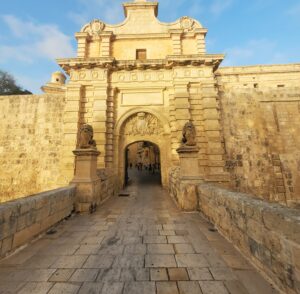
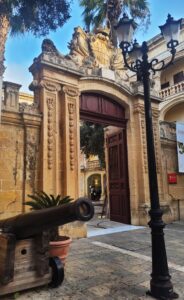
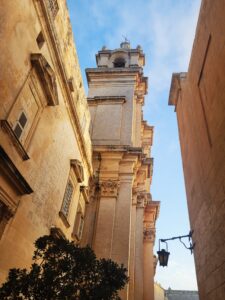 Inspired by an Arabian walled city, Mdina was Malta’s first capital, founded by the Phoenicians in the 8th century BC. The architecture constructed here in later centuries is a Baroque dream at its very best. “Game of Thrones” was filmed here, and thus the village attracts many fans of the series. A monastery for the Carmelite community still exists here. A walk around the town at sunset with the sun glinting off the Baroque exteriors is mesmerizing. Especially beautiful is St. Paul’s cathedral.
Inspired by an Arabian walled city, Mdina was Malta’s first capital, founded by the Phoenicians in the 8th century BC. The architecture constructed here in later centuries is a Baroque dream at its very best. “Game of Thrones” was filmed here, and thus the village attracts many fans of the series. A monastery for the Carmelite community still exists here. A walk around the town at sunset with the sun glinting off the Baroque exteriors is mesmerizing. Especially beautiful is St. Paul’s cathedral.
Rabat
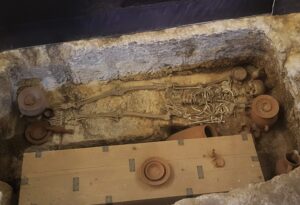
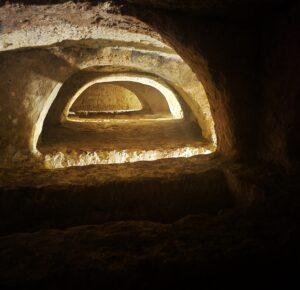 South of Mdina, this charming town is loaded with the unique Maltese wooden balconies. Yet most of the interest in this town lies underground. Beneath Saint Paul’s Church are catacombs, a temple and a burial site of the Phoenician Period from around 800 to 218 BC. The catacombs are well preserved and laid out.
South of Mdina, this charming town is loaded with the unique Maltese wooden balconies. Yet most of the interest in this town lies underground. Beneath Saint Paul’s Church are catacombs, a temple and a burial site of the Phoenician Period from around 800 to 218 BC. The catacombs are well preserved and laid out.
Marsaxlokk
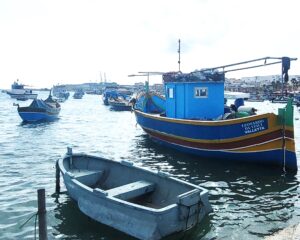
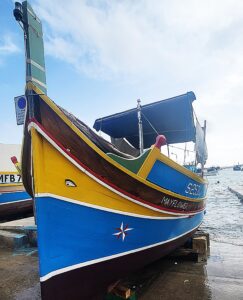 Marsaxlokk is a fishing village full of beautifully painted traditional boats. It is renowned for great views and excellent fresh seafood in the restaurants, which face this picturesque harbor. Look for the carved and painted eyes on the colorful fishing boats. The eyes are a surviving influence of the Phoenician Period and are meant to ward off evil.
Marsaxlokk is a fishing village full of beautifully painted traditional boats. It is renowned for great views and excellent fresh seafood in the restaurants, which face this picturesque harbor. Look for the carved and painted eyes on the colorful fishing boats. The eyes are a surviving influence of the Phoenician Period and are meant to ward off evil.
Mellieha
 A large resort town perched on a succession of hills in the Northern Reaches of Malta, it includes such memorable sites as:
A large resort town perched on a succession of hills in the Northern Reaches of Malta, it includes such memorable sites as:
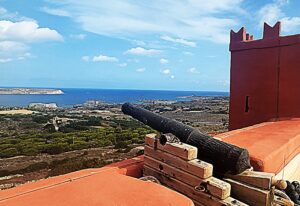
 The Red Tower or St Agatha’s Tower, which stands impressively above the Marfa Mountain ridge overlooking Ghadira Bay. Ghadira Bay has one of island’s largest sandy beaches. The rooftop on the tower offers panoramic views of the bay and North Malta islands. The Knights of St. John began construction on the tower in 1647.
The Red Tower or St Agatha’s Tower, which stands impressively above the Marfa Mountain ridge overlooking Ghadira Bay. Ghadira Bay has one of island’s largest sandy beaches. The rooftop on the tower offers panoramic views of the bay and North Malta islands. The Knights of St. John began construction on the tower in 1647.
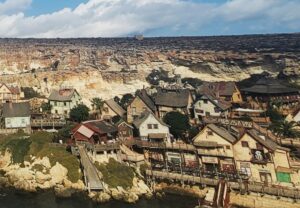 Popeye Village was built as a film set for the 1980 Robert Altman film, Popeye, starring Robin Williams. The set has been preserved and is now an amusement park. The movie was not a big hit, but the village gets a lot of visitors especially in season.
Popeye Village was built as a film set for the 1980 Robert Altman film, Popeye, starring Robin Williams. The set has been preserved and is now an amusement park. The movie was not a big hit, but the village gets a lot of visitors especially in season.
Valletta
Malta’s capital city is a bright and shiny vision built on a plateau by the Knights of St John. From the harbor, an elevator—the Barrakka Lift—is the easiest way to reach the city. When cruise ships are discharging sightseers, the line for the lift can be long. The massive harbor walls around the city are lined with cannons. These cannons helped to ward off an Ottoman invasion in 1565.
Make sure you take a ride in a Maltese gondola across the harbor. It is inexpensive and offers great views.

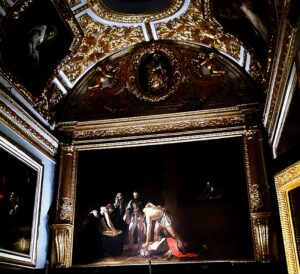
 Valletta, a UNESCO World Heritage site, is full of amazing places and gives off a fortress-city vibe. The city is also full of great shopping and restaurants. My favorite site is St. John’s Co-Cathedral, dedicated to John the Baptist, built between 1573 and 1578. I have been to many cathedrals in Europe but this one is one of the very best in terms of architecture and art. St. John’s boasts two spectacular works by the Baroque painter Caravaggio: “The Beheading of Saint John the Baptist” and “Saint Jerome Writing.” Other paintings of note are by 17th Century Calabrian artist Mattia Preti.
Valletta, a UNESCO World Heritage site, is full of amazing places and gives off a fortress-city vibe. The city is also full of great shopping and restaurants. My favorite site is St. John’s Co-Cathedral, dedicated to John the Baptist, built between 1573 and 1578. I have been to many cathedrals in Europe but this one is one of the very best in terms of architecture and art. St. John’s boasts two spectacular works by the Baroque painter Caravaggio: “The Beheading of Saint John the Baptist” and “Saint Jerome Writing.” Other paintings of note are by 17th Century Calabrian artist Mattia Preti. 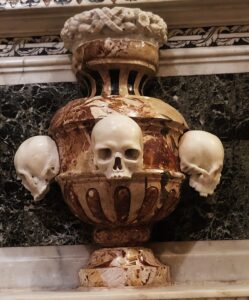 The marble carving details on the floors and walls, are fabulous.
The marble carving details on the floors and walls, are fabulous. 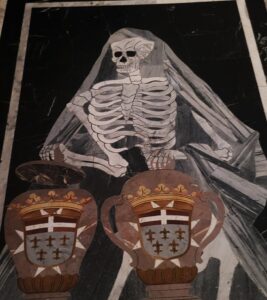
 Be careful walking on those floors—you may be stepping on the tombstones of various Knights of Malta, there are over 400! We went in the afternoon to avoid the crowds and waiting in line. There is a fee to get into the Cathedral.
Be careful walking on those floors—you may be stepping on the tombstones of various Knights of Malta, there are over 400! We went in the afternoon to avoid the crowds and waiting in line. There is a fee to get into the Cathedral.
Valletta also has the National Museum of Archaeology, Fort St Elmo and much more! Don’t miss the old neighborhoods full of the Maltese wooden balconies. They are ornately made of wood and glass and provide the inhabitants a window onto city life. 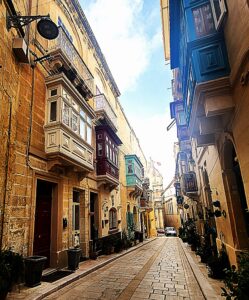
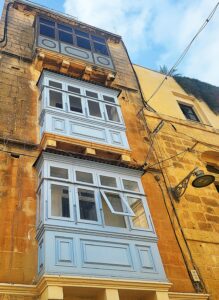 Our guide told us that “grandmothers” converse with each other from the balconies, and, to get food, lower baskets with money and shopping lists, to the street below. Crime in Malta is very low, and the grandmothers always have their orders filled.
Our guide told us that “grandmothers” converse with each other from the balconies, and, to get food, lower baskets with money and shopping lists, to the street below. Crime in Malta is very low, and the grandmothers always have their orders filled.
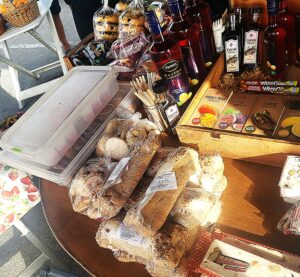
 We decided not to drive in Malta because the Maltese, like the British drive, on the opposite side of the road than Europeans and Americans. We were very lucky to get a guide and driver through Viator and Edmund Garage tours who really understood Malta and the roads and made our time there very special. Freddy immediately understood what we wanted to see and the pace that we liked to move. He showed us local places to get traditional drinks and food for a picnic which was unforgettable (but beware of Maltese coffee—not for the faint of heart).
We decided not to drive in Malta because the Maltese, like the British drive, on the opposite side of the road than Europeans and Americans. We were very lucky to get a guide and driver through Viator and Edmund Garage tours who really understood Malta and the roads and made our time there very special. Freddy immediately understood what we wanted to see and the pace that we liked to move. He showed us local places to get traditional drinks and food for a picnic which was unforgettable (but beware of Maltese coffee—not for the faint of heart).
Freddy was full of entertaining and interesting stories of living in Malta. He showed us the grace and beauty of this unique country. We were so impressed that we booked him to take us on a tour of Gozo.
GOZO
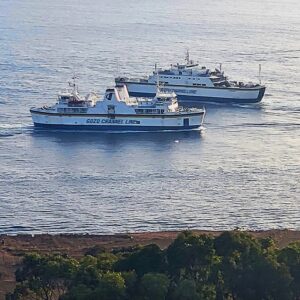
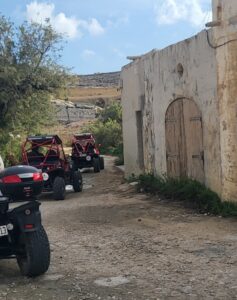 Caution: Do not call the people of Gozo “Maltese.” They are “Gozitans,” and proud of it!
Caution: Do not call the people of Gozo “Maltese.” They are “Gozitans,” and proud of it!
Gozo is much quieter and less visited by tourists Malta. It is loaded with historic sites and unique outdoor activities. It is a land of adventure for watersports such as diving, snorkeling and boating or land quests such as hiking, cycling and horseback and off-road riding. The visitor reaches Gozo is by ferry from Malta. The ferries run frequently and have snack counters. The trip on the car ferry—which we took—is about 20 minutes.
Victoria
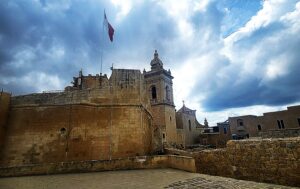
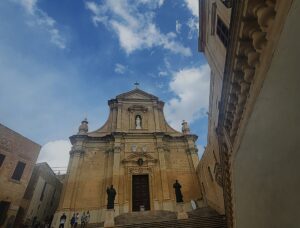 Rabat, the capital of Gozo (not to be confused with Rabat on the island of Malta), adopted “Victoria” in 1897 to commemorate Queen Victoria’s Diamond Jubilee. All paths seem to pass through this enchanting hilltop town. Il-Kastell, a walled citadel, is hard to miss as you approach Victoria. There are many churches, museums and even timeworn prisons to see in the citadel. The town square is a great place to relax, eat and enjoy the ambiance of the historic town.
Rabat, the capital of Gozo (not to be confused with Rabat on the island of Malta), adopted “Victoria” in 1897 to commemorate Queen Victoria’s Diamond Jubilee. All paths seem to pass through this enchanting hilltop town. Il-Kastell, a walled citadel, is hard to miss as you approach Victoria. There are many churches, museums and even timeworn prisons to see in the citadel. The town square is a great place to relax, eat and enjoy the ambiance of the historic town.
Dwejra
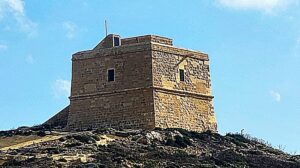
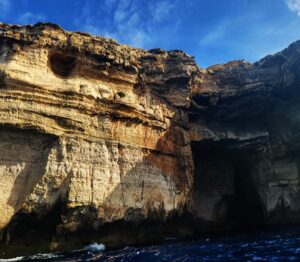
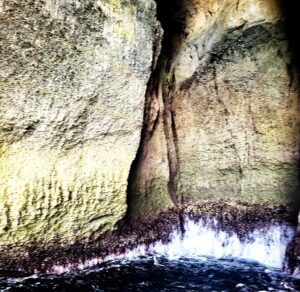 The coastal landscape around Dwejra is spectacular, The Azure Window, once one of the most photographed rock formations in Malta, collapsed into the sea in 2017, but the scenery here remains impressive with great diving and snorkeling opportunities. A cliff-bound lagoon, known as the Inland Sea, has a striking tunnel of caves with sapphire waters and coral growing from the rocks. The natural wonders here are fantastic!
The coastal landscape around Dwejra is spectacular, The Azure Window, once one of the most photographed rock formations in Malta, collapsed into the sea in 2017, but the scenery here remains impressive with great diving and snorkeling opportunities. A cliff-bound lagoon, known as the Inland Sea, has a striking tunnel of caves with sapphire waters and coral growing from the rocks. The natural wonders here are fantastic!
Xaghra
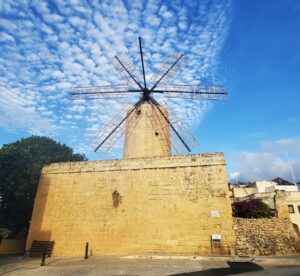 Xaghra is a charming village, located in a beautiful rural landscape. It is near the Ggantija Temples. Legend says these Megalithic temples—the “Temples of the Giants” were built by ancient giants. Try to visit at the end of the day, when the structures are bathed in the bewitching waning light. Other sites in Xaghra are the TaKo windmill, built in 1725, and the spectacular Xaghra Parish Church.
Xaghra is a charming village, located in a beautiful rural landscape. It is near the Ggantija Temples. Legend says these Megalithic temples—the “Temples of the Giants” were built by ancient giants. Try to visit at the end of the day, when the structures are bathed in the bewitching waning light. Other sites in Xaghra are the TaKo windmill, built in 1725, and the spectacular Xaghra Parish Church.
Zebbug
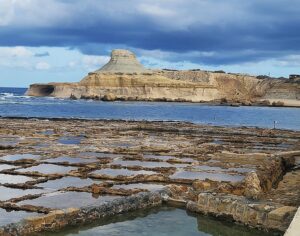 This picturesque area, located on the northern coast of Gozo is definitely worth a stop. Nearby are the Xwejni Saltpans. Salt has been harvested here since ancient times with seawater being channeled into the pans and left to evaporate in the sunlight. We had lunch here sitting on the tailgate of our car, it was more romantic than any restaurant view.
This picturesque area, located on the northern coast of Gozo is definitely worth a stop. Nearby are the Xwejni Saltpans. Salt has been harvested here since ancient times with seawater being channeled into the pans and left to evaporate in the sunlight. We had lunch here sitting on the tailgate of our car, it was more romantic than any restaurant view.
Ramla Bay
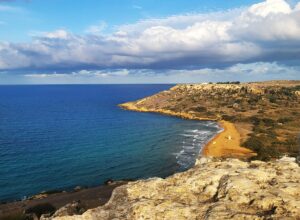
 Above the bay is Calypso’s Cave. According to legend this is the cave referred to by Homer’s epic poem “The Odyssey,” where the nymph hosted Odysseus ( or Ulysses in Latin) for seven years. From the viewing platform near the cave are panoramic views of the coast and the bay.
Above the bay is Calypso’s Cave. According to legend this is the cave referred to by Homer’s epic poem “The Odyssey,” where the nymph hosted Odysseus ( or Ulysses in Latin) for seven years. From the viewing platform near the cave are panoramic views of the coast and the bay.
The Island of Camino
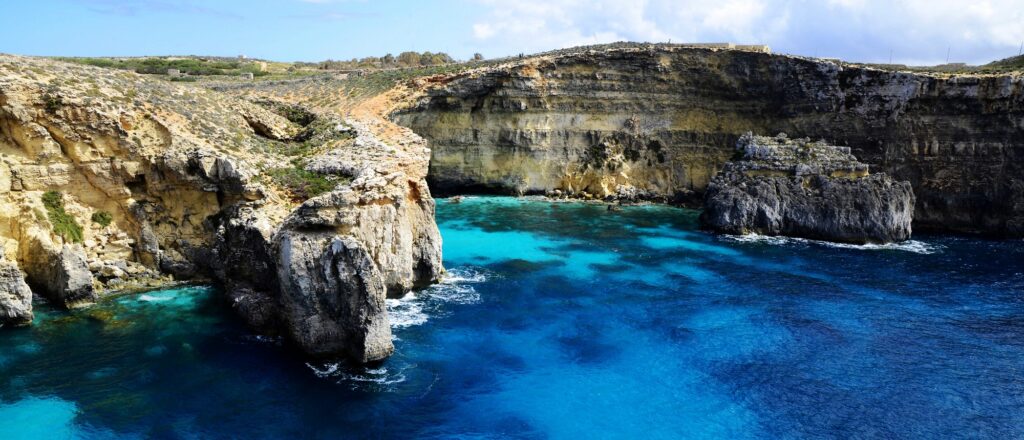 Between Malta and Gozo is the much smaller, sparsely populated island of Camino. It can be reached by ferry services from the larger islands. Camino’s Blue Lagoon is a beautiful site surrounded by caves and rocky cliffs. From the village of Quala on Gozo, you can see scenic views of Camino.
Between Malta and Gozo is the much smaller, sparsely populated island of Camino. It can be reached by ferry services from the larger islands. Camino’s Blue Lagoon is a beautiful site surrounded by caves and rocky cliffs. From the village of Quala on Gozo, you can see scenic views of Camino.
You will not soon forget Malta- this unique fortress, island nation, full of amazing landscapes, rich in history, culture and a resilient national character.

